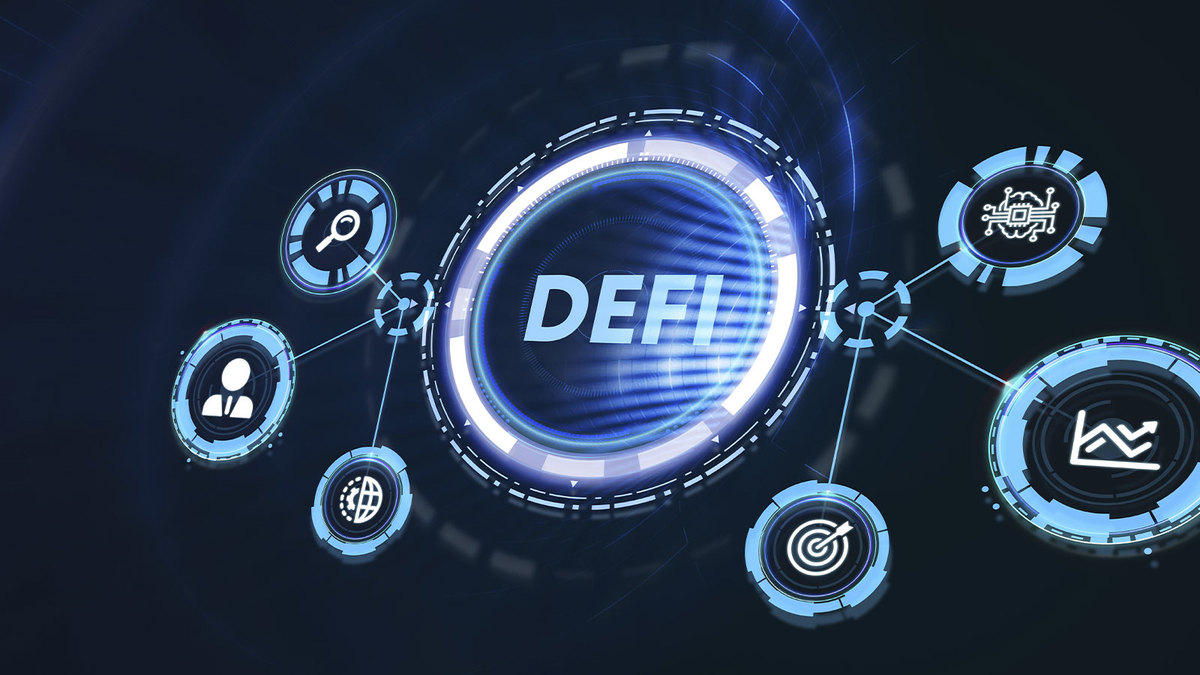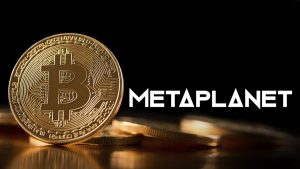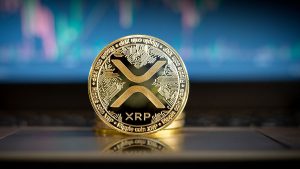Decentralized Finance (DeFi) was introduced in 2020 as an open-source blockchain system that encourages individuals to access financial services directly. DeFi integrates crypto and blockchain technology to manage financial transactions without interference from external agents and centralized institutions like banks and brokerages.
Usually, consumers rely on these centralized institutions for financial services such as lending, borrowing, and trading. In return, consumers get to pay charges for services performed. However, with the introduction of DeFi, individuals are empowered to perform peer-to-peer transactions without the need for an intermediary.
As a result, they will see improved privacy in transactions, devoid of restrictions in centralized systems. Additionally, eliminating middlemen naturally reduces costs and speeds up transactions.
DeFi encourages creativity and technological advancements to decentralize the financial system. Simply put, DeFi transfers the crucial components of traditional institutions’ work into the hands of individuals.
With DeFi, once restricted from opening a bank account, individuals are allowed access to banking services. Another key benefit of DeFi is its flexibility. For example, unlike centralized finance, trading hours are not restricted.
DeFi Essentials and Operational Model
DeFi platforms have no restrictions, allowing easy access by anyone with an internet connection. Since third parties are restricted from participating in DeFi transactions, service fees would largely be abolished. Financial transactions in DeFi are done with smart contracts that do not require assistance from traditional finance institutions. Instead, DeFi ecosystem participants transact directly with themselves using blockchain technology.
Both parties can negotiate interest rates directly and lend cryptocurrency or money via DeFi networks. Participants are responsible for their assets as most DeFi products do not confiscate users’ funds. The funds are held securely in a digital wallet for easy access and converted to a “fiat-backed stablecoin” when needed. Most assets can be moved anywhere, and transactions can be finished within minutes, depending on your wallet.
To secure the wallet housing the digital assets, DeFi users are required to have a private key. A private key is an advanced encryption code similar to a random username known only to the wallet’s owner. A lost private key cannot be recovered, so losing one means losing access to your finances.
DeFi participants can initiate transactions via smart contracts, which require a third-party agreement to some specific conditions. For example, a smart contract can automatically transfer money to a certain account regularly as long as the funds are available.
Smart Contract Immutability
Notably, smart contracts cannot be altered once set up, thus, money cannot be transferred to another account or redirected. Users do not need to disclose their identity, however, they can review smart contracts recorded on the blockchain. Since blockchains are immutable, they cannot be changed or modified.
Compared to more traditional systems, smart contracts are seen as a more secure, transparent, and efficient way for parties to transact with each other. Because they do away with costly bureaucracy, they also often result in lower expenses. For context, smart contracts are self-executing contracts on a blockchain that uses simple “if this … then …” statements written in code.
Each party to a contract inputs conditions that allow fulfillment of the smart contract, without the need for a middleman. Smart contracts run automatically when previously established conditions are met.
Decentralized Finance has developed into an industry with various businesses and ventures, even though it was originally birthed as a bridge to bring financial services to individuals who lack access to them.
Decentralized Finance Onboarding Channels
Some of the most popular channels available to DeFi application users include decentralized exchanges, lending/yield farming, liquidity providers, prediction markets, and NFTs.
Decentralized Exchange (DEX)
Accessing Decentralized Exchanges (DEXs) is the top choice for most Decentralized Finance app users. Crypto users can communicate easily among themselves via exchanges such as PancakeSwap and Uniswap, SushiSwap, and dYdX. Each of these DEX has its unique features and interface, giving users a variety to choose from.
A DEX can be accessed through a desktop application, a mobile app, or a web interface. Log into your preferred DEX with your private key to see your crypto balances. Users do not need to submit personal information like names and addresses, which is wonderful for individuals who love their privacy.
Transactions done in crypto-to-crypto trading pairs are the primary support available on most DEX. Users who wish to trade in fiat currency must convert their money to crypto through a centralized exchange or peer-to-peer platform. As DEX becomes an important part of the crypto space, we expect to see improved interfaces and wider user adoption.
Lending/Yield Farming
Operationally, lending platforms allow users to lock their funds in a pool similar to how a liquidity pool functions. Other users can borrow these locked-up funds in exchange for interest- a practice known as yield farming. There are hundreds of decentralized finance apps available that provide lending. However, some provide flash loans, requiring no collateral from the borrower. Tokens borrowed for yield farming are locked on the Decentralized Exchanges through smart contracts.
Many DeFi protocols reward yield farmers with governance tokens, which can be traded on exchanges or used to vote on decisions related to that platform.
Liquidity Providers
Liquidity refers to the ease with which users can easily trade one digital asset for another on an exchange. Notably, Liquidity Providers (LPs) play an important role in the DeFi market, as many users have faced challenges with liquidity.
There is no DeFi without liquidity because the concept of DeFi is to remove the middlemen in centralized finance. The goal of Liquidity Providers is to give traders access to almost constant liquidity.
These entities facilitate trading and earn transaction fees through a process known as liquidity mining by staking their cryptocurrencies on DEXs. They increase market liquidity by providing buy and sell orders, benefiting themselves and the market.
Prediction Markets/Gambling
Prediction Markets in DeFi allow people to bet on future events that are not related to the price of underlying assets. Contracts for prediction markets often involve the outcomes of real-world events like the weather, election results, and a company’s sales volume.
Notably, some states have prohibited using fiat currency in prediction markets because of their similarities with gambling. However, individuals can participate in the market using cryptocurrencies. The major advantage of using decentralized prediction markets is the global reach.
Meanwhile, users gamble using DeFi applications like UpvsDown, ZKasino, Azuro, and Horse Racing Slot Keno Roulett.
NFTs
Non-fungible tokens (NFTs) often associated with digital arts intersect with DeFi to improve various functions in the crypto ecosystem. Through DeFi services, users can buy, sell, and trade different NFTs on decentralized exchanges.
NFTs are great because they store proof of ownership for users. Users can unlock this stored wealth which then becomes liquid in decentralized finance.
Best Blockchains for DeFi
Some of the top blockchain protocols for DeFi include Ethereum (ETH), Solana (SOL), BNB Chain, Avalanche (AVAX), Cardano (ADA) and XRP Ledger (XRPL). These are rated per their Total Value Locked (TVL) figures.
Ethereum
Technically, Bitcoin was the first blockchain that permitted control over a decentralized network. However, Ethereum is widely known as the pioneering blockchain that scaled up DeFi, allowing it to progress toward becoming a decentralized global financial system.
Ethereum aims to give its users alternatives to their banking options and exposure to the global market through its DeFi products and services. Ethereum has become a favorite among developers seeking to build decentralized apps for crypto-based financial services like lending, borrowing, earning interest, and private payments.
At press time, data from the onchain analytical platform DeFiLlama shows Ethereum has reached over $47 billion in Total Value Locked (TVL). The top five decentralized applications powered on Ethereum based on their TVL are Lido, EigenLayer, AAVE, Maker, and ether.fi.
Solana
Solana has also emerged as another top blockchain for performing DeFi transactions. Many new DeFi projects have established themselves on Solana due to its unique characteristics like increased speed, scalability, and low fees.
DEXs, Asset Management Tools, Margin Trading, Decentralized Lending, and other DeFi initiatives, are being developed on Solana with the hopes of becoming DeFi blue chips. At press time, Solana’s TVL has surged to $4.6 billion, according to DeFiLlama. Jito, Kamino, and Marinade are currently ranked as the top three protocols on Solana with a TVL of $1.7 billion, $1.2 billion, and $1.16 billion respectively.
BNB Chain
Launched by Binance in 2017, BNB Chain is now among the top blockchains enhancing DeFi integration. The blockchain is home to the world’s fourth-largest DeFi ecosystem, with $3.55 billion in TVL.
Avalanche
Avalanche is another blockchain network currently riding high on DeFi sentiments. The platform is capable of performing DeFi transactions blockchain as it focuses on low costs, transaction speed, and eco-friendliness. Avalanche seeks to combine the best components of existing blockchains to build an interoperable and scalable ecosystem.
Cardano
Cardano went live with smart contracts opening its ecosystem to a range of promising dApps following the Alonzo upgrade on September 12, 2021. The blockchain aims to become the most reliable platform for creating secure and scalable dApps for real-world use cases.
Cardano also focuses on delivering economic identity to the billions via decentralized applications that help manage identity, value, and governance. ERGO DEX, MELD, and Empower remains some of the top DeFi projects on Cardano.
XRPL
Ripple’s XRPL is a public blockchain built for decentralized finance businesses. The blockchain’s DeFi capabilities were recently enhanced with the launch of a natively built Automated Market Maker (AMM) protocol. With AMM, developers can create liquidity pools for any pair of assets issued on XRPL.
Meanwhile, the XRPL blockchain already has an existing DEX featuring a conventional order book that provides a capital-efficient trading mechanism for pairs with high liquidity.
How To Get Started In DeFi
To take part in the DeFi ecosystem involves these few steps:
- Research on interested activities
- Create a wallet that accepts DeFi apps
- Add crypto to your wallet
- Find a DeFi app for borrowing, liquidity, lending, yield farming, or other activities
- To start, add your cryptocurrency to the app.
Conclusion
Decentralized Finance is now one of the top innovations in the crypto space. DeFi’s growth is substantiated by its total value locked, now at $80.41 billion per data from DeFiLlama. In the first half (H1) of 2024, DeFi’s TVL skyrocketed to over $94 billion amid a boom in the market. DeFi’s TVL is now over twice its low of $36.59 billion in October 2023, demonstrating its increasing prominence.
DeFi trends are also gaining traction regarding new capital inflows and protocol growth, with 2024 shaping up as a recovery year for cryptocurrencies. Some of the top DeFi trends to look out for in H2 2024 include sustainable finance initiatives, DeFi insurance protocols, Layer-2 scaling solutions, crypto bridges, DeFi gaming, and others.
As decentralized finance continues to revolutionize, it opens the door for more sustainable, transparent, and accessible financial systems. In a recent development, Uniswap Labs has urged the US Securities and Exchange Commission (SEC) to stop new amendments on a proposal that defines DeFi as an exchange.
It is worth noting that while DeFi offers profound benefits to individuals and corporate firms, it also portends inherent risks. First, vulnerabilities in smart contracts can cause substantial losses or threats for users. Additionally, the legal framework in the ecosystem is still developing, resulting in compliant challenges for users.
Liquidity is also a danger, especially when there is market stress and not enough liquidity to allow users to execute trades or withdraw funds. Nonetheless, DeFi users and projects can mitigate some of these challenges by partnering with reputable blockchain development firms.
These firms can help audit smart contracts, ensuring they are without vulnerabilities.
Their expertise can also assist in providing regulatory guidance, enhanced security, compliance, and governance, which is crucial for the resilience of DeFi projects.























